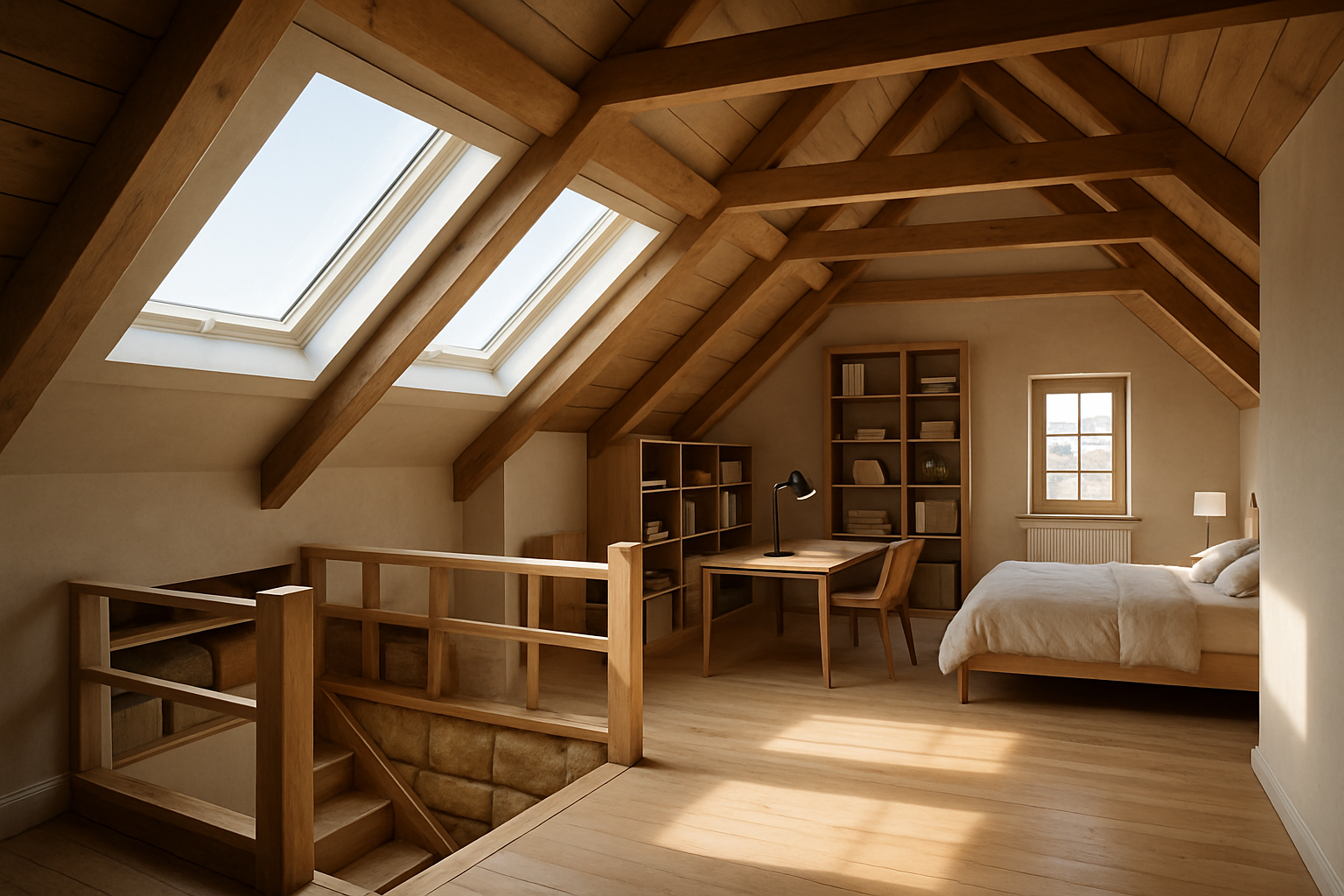Transforming Attics: The New Frontier of Home Design
Tucked away beneath sloping roofs, attics have long been forgotten spaces, relegated to storage or left unused. But a revolution is sweeping through homes across the country, as homeowners and designers alike rediscover the potential of these lofty retreats. From cozy reading nooks to luxurious master suites, attics are emerging as the new frontier of home design, offering unique opportunities to maximize living space and create truly one-of-a-kind environments.

The appeal of attic spaces goes beyond their physical attributes. There’s a psychological draw to these elevated sanctuaries, offering a retreat from the bustle of daily life. The very act of ascending to an attic space can feel like entering a private world, separate from the rest of the home. This sense of escape and seclusion makes attics ideal for a variety of purposes, from home offices to meditation spaces.
Historical Context and Evolution
Attics have a rich history in residential architecture, dating back to medieval times when they served primarily as storage areas or servants’ quarters. In the 18th and 19th centuries, as urban populations grew and space became premium, attics began to be utilized as living spaces, particularly in crowded cities.
The modern attic revival can be traced to the mid-20th century when post-war housing booms led to creative use of all available space. However, it’s in the 21st century that attic design has truly come into its own, driven by a combination of factors including urban density, rising property values, and a growing appreciation for unique, personalized living spaces.
Contemporary Design Approaches
Today’s attic conversions are a far cry from the dusty, cramped spaces of the past. Contemporary designers are employing a range of innovative techniques to transform these areas into stunning living spaces:
Maximizing Natural Light
One of the key challenges in attic design is ensuring adequate natural light. Modern solutions include the installation of skylights, dormer windows, and even glass floors to allow light to penetrate from upper levels. These features not only brighten the space but also create a connection with the outdoors, enhancing the sense of openness.
Creative Storage Solutions
Making the most of every nook and cranny is crucial in attic design. Built-in storage units that follow the contours of sloped ceilings, under-eave drawers, and custom-fit wardrobes are just a few of the clever storage solutions being implemented. These not only maximize space but also contribute to a clean, uncluttered aesthetic.
Embracing Structural Elements
Rather than hiding structural elements like beams and trusses, contemporary designers are showcasing them as integral parts of the design. Exposed wooden beams can add warmth and character to a space, while metal trusses can lend an industrial chic vibe. These elements serve as natural focal points, anchoring the design and creating visual interest.
Multifunctional Spaces
Given the often limited square footage of attics, designers are creating multifunctional spaces that serve various purposes. A home office that doubles as a guest room, or a master suite with a built-in workout area, are examples of how attics are being optimized for modern living.
The Technical Challenges of Attic Conversion
While the design possibilities of attics are exciting, there are significant technical challenges to overcome in their conversion. Structural considerations are paramount, as attics were often not originally designed to bear the weight of regular occupancy. This may necessitate reinforcing floor joists or even restructuring parts of the roof.
Insulation is another critical factor. Attics are particularly susceptible to temperature fluctuations, so proper insulation is essential for comfort and energy efficiency. Modern insulation techniques, including spray foam and radiant barriers, are being employed to create comfortable year-round environments.
HVAC considerations also play a crucial role in attic design. Ensuring proper ventilation and temperature control can be challenging in these spaces, often requiring creative solutions such as mini-split systems or zoned HVAC setups.
The Impact on Home Value and Marketability
Investing in attic conversion can have a significant impact on a home’s value and marketability. A well-designed attic space can add substantial square footage to a home, often at a lower cost than traditional additions. This added living space can be a major selling point in competitive real estate markets.
Moreover, unique attic conversions can set a property apart, appealing to buyers looking for homes with character and distinctive features. Whether it’s a luxurious master suite with city views or a cozy family room tucked under the eaves, a beautifully designed attic space can be the element that makes a house truly memorable.
Sustainability and Eco-Friendly Approaches
The trend towards attic conversion aligns well with broader movements towards sustainability in home design. By making use of existing structures rather than building new additions, attic conversions represent a form of adaptive reuse that minimizes environmental impact.
Many attic designs are incorporating eco-friendly materials and energy-efficient systems. From recycled insulation materials to energy-saving LED lighting systems, there are numerous ways to make attic spaces not just beautiful, but also environmentally responsible.
The Future of Attic Design
As urban areas continue to densify and property values rise, the trend of attic conversion is likely to accelerate. We can expect to see even more innovative approaches to these spaces, potentially including modular designs that allow for easy reconfiguration of attic layouts.
Advancements in materials science and construction techniques may also open up new possibilities for attic design. Lightweight, strong materials could allow for more dramatic architectural features, while improvements in insulation and climate control technologies will make it easier to create comfortable attic environments in any climate.
The transformation of attics from forgotten spaces to design showcases represents a broader shift in how we think about our homes. It’s a testament to the power of creative design to unlock hidden potential, turning constraints into opportunities. As we continue to reimagine these lofty spaces, attics are set to play an increasingly important role in shaping the homes of the future.





